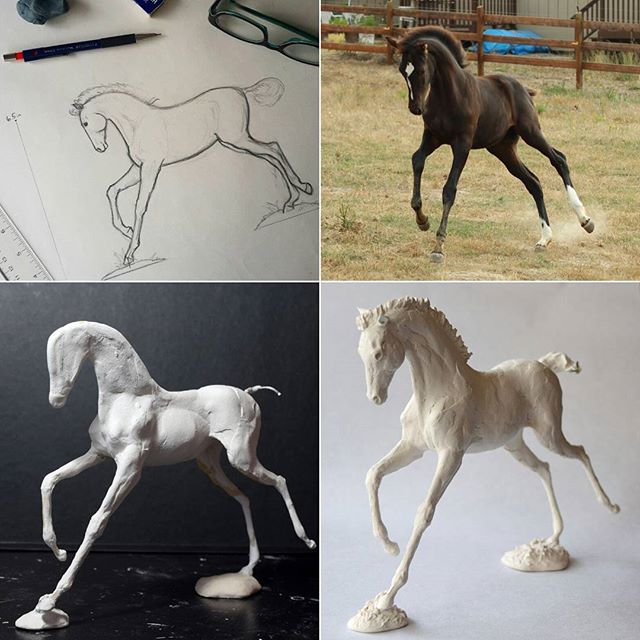
This sculpture started off white (the colour of the clay and then the gesso), then got a black base layer, was painstaking lightened to a chestnut brown, and then tuned to a fine dark mahogany brown.
Q. How do you decorate your horse sculptures?
Good question! After a clay sculpture has dried out completely (a process that can take up to a week), I cover it in a layer of gesso (pronounced: je-so – as in “jelly”).
Gesso is a primer used by artists: it won’t yellow and is designed to cover a multitude of materials. It seals the surface and prepares it to accept paint. Gesso ensures that my paints adhere properly to the Creative Paperclay and won't flake off in the future.
Next, I spray several layers of acrylic to cover the whole horse. I do not use regular spray paints from a hardware store, many of which are solvent based and not necessarily designed for long-term reliability. I use a specially designed artist-grade acrylic paint in spray form by Liquitex. This layer can be any colour, but I often choose dark neutrals such as raw umber, black, or grey.
Once that layer is dry, I go back with a brush and touch up all the nooks and crannies with the same dark colour, except this time from a tube. I do this to ensure total and uniform coverage, so that no white from the gesso is showing anywhere.

Most of my sculptures are painted in a dark solid colour first
But why?
This approach is similar to “laying a ground” or "toning" in painting. This means to put down a layer of paint on a canvas to give it a tone before starting the actual painting. I do it on my sculptures for several of reasons:
- There is something intimidating about a blank canvas/sculpture. Laying down a base coat helps to loosen my creative juices.
- Having a white base can make certain colours look garish, so darkening the base tones the sculpture and sets the atmosphere for future paint that’s laid down on top. This is especially true when I use acrylic mediums that promote transparency so that previous layers of paint are visible underneath new ones.
- Ensuring that no white base shows right from the beginning means that I can concentrate on simply painting, rather than trying to “cover up” unwanted areas. This is really important when a sculpture's surface is highly textured.
Laying down a toned ground isn't necessary, but it really suits my approach to painting my horse sculptures, and helps to create a depth of colour and emotion.

What's Next?
Build your own horse sculpture
More about the importance of priming air dry clay

